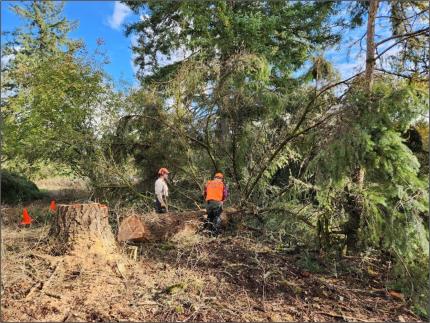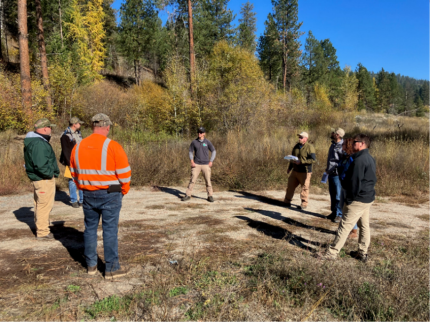
Wildlife Program report: Oct. 16-31, 2023
Providing Recreation Opportunities
Quincy Lakes Trails Plan: Staff members are working with a non-profit recreation organization to finalize a trail conditions assessment of approximately 60 miles of trails on the Quincy Lakes Unit. They began the process of contracting an archaeology consultant to conduct a cultural resources survey on the draft trail alignments.
Rulemaking: Planning and Recreation Section staff members have been working on rulemaking related to the unauthorized construction of trails and structures on Washington Department of Fish and Wildlife (WDFW) lands.
Recreation Ecology: Staff members facilitated a presentation by Recreation Ecologist Dr. Christopher Monz from Utah State University on research methodology related to recreational impacts on habitat within protected lands.
Conserving Natural Landscapes
Cultural Resource Inventory: Staff members are drafting a request for proposal for a contract with Historical Resource Associates, Inc. They plan to conduct a cultural resource inventory in Quincy Lakes to determine if the TREAD proposed re-routes are free of cultural artifacts.
Cowlitz Wildlife Area Planning: The planning team met with Tacoma Power for a series of field visits to discuss adaptive forest habitat management on the Cowlitz Wildlife Area. Staff members are developing a recreational survey for the wildlife area that will soon be available to the public. In addition, staff members are working with the University of Washington Outdoor Lab to develop both intercept surveys and a remote survey using a chatbot to gather recreational data for the 2024 field season.
L. T. Murray Wildlife Area Planning: The L. T. Murray Wildlife Area final draft plan is pending signature by the director. Both the internal and external reviews are complete.
Providing Education and Outreach
Ambassador Program: Partnership Coordinator Browning is gathering information about interest among land managers for a potential 2024 Ambassador Program. We will have a formal debrief of 2023 programming with Washington Trails Association, the contractor for the program, next week.
Kiosks: Kiosk production is moving along at a steady clip. Staff members designed and ordered kiosks for Lewis Butte and Ponds 4 and 5. Additionally, they are working with land managers to get cultural inventories completed ahead of the next bulk kiosk rollouts.
Managing Wildlife Populations
Carcass Pit Inspection: Sherman Creek Wildlife Area Assistant Manager Palmer and Wildlife Area Manager Anderson hosted a tour of the state Department of Transportation’s (DOT) Trout Lake roadkill carcass pit, located off state Highway 20, at Sherman Creek Wildlife Area. Two DOT employees and seven Washington State Department of Fish and Wildlife (WDFW) Region 1 employees attended. They were trying to determine what can be done to keep large carnivores from scavenging out of the pit, which is a somewhat shallow, narrow, and short trench. They will be pursuing the most promising option, working to arrange a drop-off agreement with the county landfill.
Washington department of Fish and Wildlife (WDFW) staff members also inspected the WDFW farm animal compost facility located nearby, which is also on WDFW land. This fenced facility provides an option for local farmers to have WDFW conflict staff members dispose of dead livestock. This facility is not meant for wildlife, because compost from wild ungulates can have limited use due to disease concerns.

Chronic Wasting Disease: Private Lands Biologist Nizer led a chronic wasting disease (CWD) check station at Washtucna. Nizer had one volunteer from Washington State University that he taught to take lymph nodes out. Nizer also checked hunting camps and took five samples at a camp.

Private Lands Biologist Nizer transferred CWD samples to Chronic Wasting Disease Surveillance Coordinator Westacott from the 21st and 22nd check stations.
Natural Resource Technician Heitstuman staffed the Evan’s Road Check Station near Asotin with Natural Resource Technician Tritt. Closing weekend did not provide many sampling opportunities. Samples were transferred as requested. They also checked on Department of Transportation roadkill collections.
Selkirk and Cabinet-Yaak Grizzly Bear Conservation Strategy: Wildlife Biologist Prince participated as a technical team member at the first grizzly bear conservation strategy meeting. The conservation strategy, once developed, will serve as the management document for the Selkirk and Cabinet-Yaak grizzly bear populations. The first meeting focused on demographic monitoring and habitat management. The strategy will likely take many years to draft before it will be available for public comment.
Providing Recreation Opportunities
Hunter Check Stations: Biologist Brinkman ran the hunter check station along Highway 395 north of Deer Park, with assistance from Chronic Wasting Disease Biologist Westacott. This check station provides an opportunity for biologists to interact with hunters participating in the modern firearm deer season. Biologists collected samples from hunter-harvested deer as part of a CWD surveillance effort in Region 1. One hunter had also harvested a grouse and left the wing and tail with the biologists to be submitted with wing barrel samples.
Rock Lake Access Site: The Yakima and Lacey construction shops teamed up for a toilet removal at Rock Lake. Region 1 Access Manager Dziekan went out to the access area ahead of time to salvage parts from the fiberglass toilets before they were demolished. Dziekan helped tear out the fencing around the outhouses so that the parts could be used at other sites.
The construction crew removed the fence posts that were concreted in the ground, tore the fiberglass toilets down, had the vaults pumped, then tore the concrete holding tanks out of the ground. The construction crew finished the project with dirt and gravel in the holes and smoothed out the area. Once the construction crew was finished it was hard to tell anything was ever there. Dziekan scheduled the delivery of portable toilet units to be used until a more permanent agreement can be worked out with the property owners.
Private Lands Access: Private Lands Biologist Nizer has been working with an avid hunter since June about where he should take his grandson hunting in Whitman County. Nizer coordinated with landowners and provided access through the landowner's access list that allows hunters to access private lands. Nizer received a picture of a harvested mule deer on one of the access sites by the successful grandson.
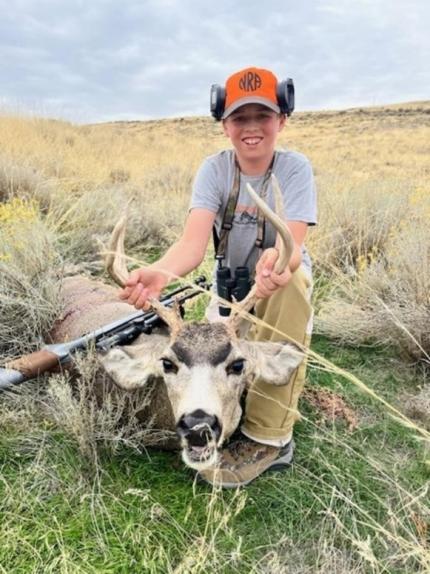
Asotin Creek Wildlife Area Elk Hunting: Elk hunters were setting up camps and preparing the Friday before opening day at Smoothing Iron Ridge. Very few elk had been observed on the wildlife area as of that Friday. It is difficult to determine the reasons why elk observation is low.
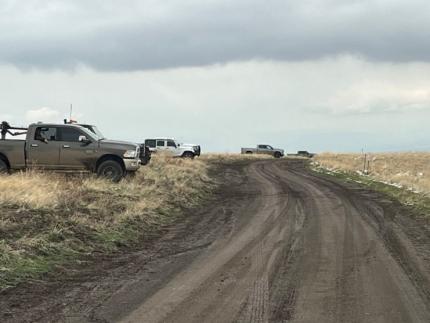
Rustlers Gulch Trail Clearing: Sherman Creek Wildlife Area Assistant Manager Palmer spent the week using his mini-excavator at Rustlers Gulch Wildlife Area to clear brush on an extensive system of trails between Beaver Creek and Horseshoe Lake. These trails are very popular with horseback riders.
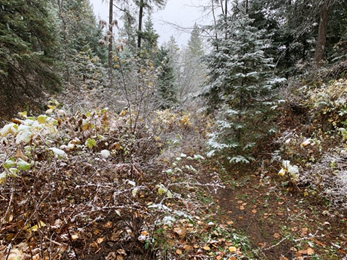
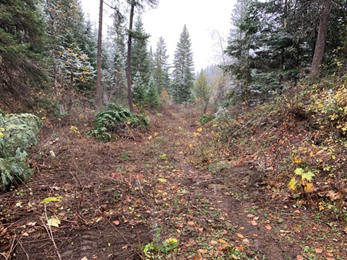
Providing Conflict Prevention and Education
Beaver, Farmington: Wildlife Conflict Specialist McCarty connected with Habitat Biologist Mackelvie on a beaver dam that was causing flooding in Farmington. Mackelvie and McCarty established a plan to visually evaluate the dam and once they speak to the landowner to decide if pond levelers or hydraulic project approval would be most effective.
Beaver Relocation Site Survey: Wildlife Conflict Specialist Kolb met with a permitted beaver relocator and a landowner in Walla Walla County to access and score potential beaver relocation sites. The landowner is enthusiastic about the possibility of beaver being relocated to their property. Additional coordination and follow-up with District 3 staff members will be necessary before any relocation effort is initiated.
Bear Depredation: Acting Wildlife Conflict Specialist Harris responded to a report of a black bear killing and dragging off a domestic sheep. Harris and Officer Beauchene investigated and determined that a black bear was responsible for killing two sheep over the past week. A culvert trap was set in response to the depredations. Wildlife Conflict Specialists Harris and Samsill called out hound hunters to track down the bear, resulting in the bear being removed. They collected tooth samples, and the bear meat was donated.
Great Horned Owl: Biologist Brinkman and Conflict Specialist McCarty responded to a call of a great horned owl entangled in netting material that was stretched over the top of a chicken coop/run. The owl was presumably attempting to prey upon one of the chickens and got tangled in the mesh netting in the process. The mesh was wrapped tightly around one foot, cutting off circulation to the toes and causing minor abrasions as the owl fought to get free. Brinkman and McCarty were able to restrain the owl and remove the netting from the injured foot. It was determined that the owl should go to a wildlife rehabilitation facility for further evaluation and monitoring but seems likely that it will make a full recovery and be released back into the wild.
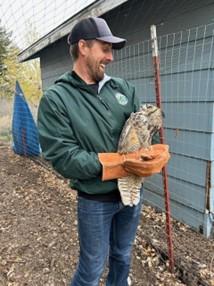
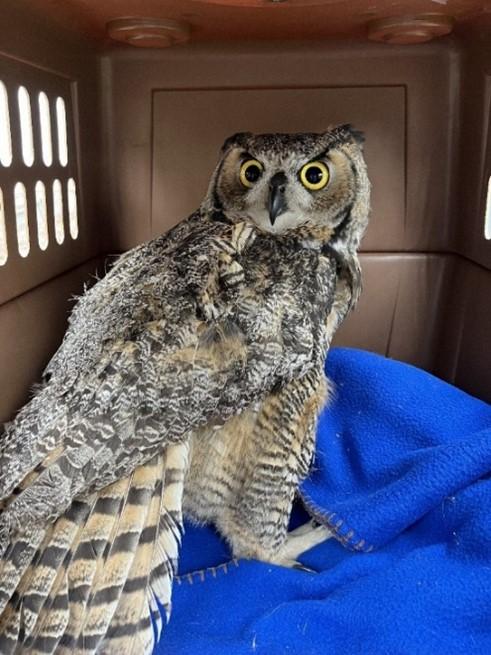
Northport Bear Smart Discussion and Planning: Wildlife Conflict Specialist Bennett began work on Northport becoming a bear smart community with bear proof garbage receptacles and assisting landowners with securing attractants.
Depredation Investigation: WDFW staff members investigated an injured adult cow in Grouse Flats territory. The determination of the investigation was a confirmed wolf depredation.
Conserving Natural Landscapes
Revere Habitat Restoration: Wildlife Area Assistant Manager Rimmelspacher and Private Lands Biologist Baarstad went to the Revere Wildlife Area with an ATV and broadcast spreader to seed after the disturbance from the Wagner fire and pole replacement. The Avista Company hired a contractor to repair the damage below the newly installed power poles and Rimmelspacher broadcast seeded a native grass mix. Rimmelspacher also broadcast seeded a pollinator mix forb mix in a food plot area that the Pheasant Forever Chapter had used for several years.
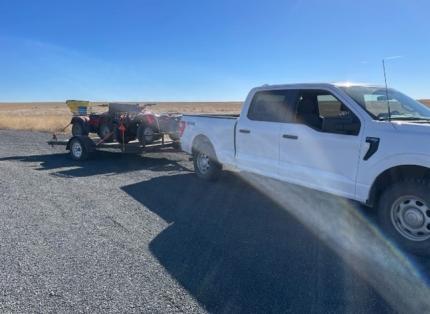
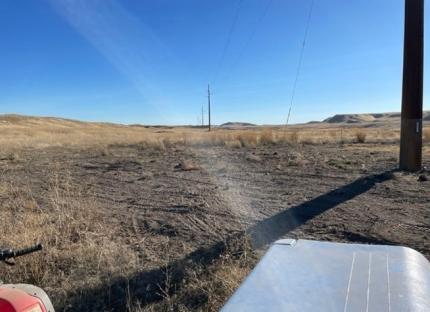
Duck Stamp Project: Private Lands Biologist Nizer and Natural Resource Technician Rumiser mowed a marsh wetland area with a marsh master to provide water access for waterfowl and hunters on a private lands hunting access site in Whitman County. The site will take about a week to mow all 12 acres of bull rush and cattails.
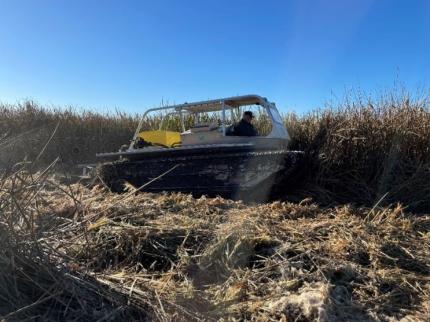

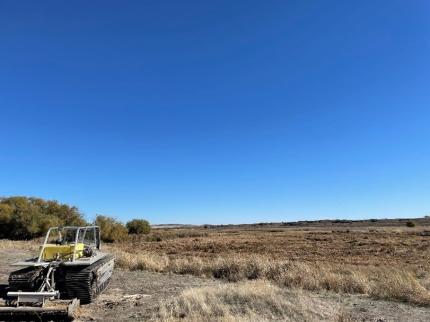
Habitat Project: Private Lands Biologist Hadley planted several shrubs at a habitat project and spot sprayed for weed control at another location. Coordination plans were made for upcoming habitat field day with the Walla Walla Conservation District and Pheasants Forever in coming together to plant shrubs on a landowner’s property in Walla Walla County.
W. T. Wooten Wildlife Area Noxious Weed Control: Natural Resource Technician Jensen sprayed weeds at the Hartsock Unit, Russell Unit, and in the fields at the headquarters. Natural Resource Technicians Jensen and Tritt traveled to Walla Walla County with the dump trailer and cleaned up kochia and Russian thistle that is growing around the Stovall Road parking area. Wildlife Area Manager Dingman began working on the annual Rocky Mountain Elk Foundation grant application to get funds to aerially spray yellow star thistle infestations on the W. T. Wooten Wildlife Area.
Native Seed Planting: Acting Private Lands Biologist Nizer seeded an 8-acre plot of land in Albion. The landowner just joined the hunt by written permission program for a total of 100 acres with habitat for deer, pheasant, and waterfowl. The native seed planting will provide cover for pheasant and food for deer during the hunting seasons.
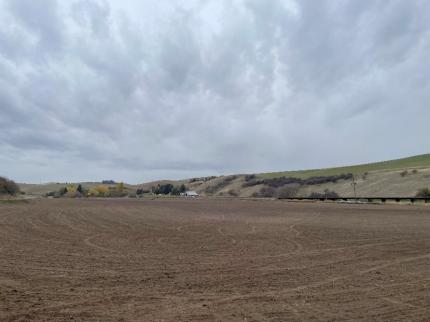
Marsh Master: Private Lands Biologist Nizer finished mowing about 20 acres of bull rush in a wetland. The bull rush wasn’t allowing ducks to land in waterways because of overgrowth and didn’t allow for hunters to find good access to water. This mowing will be followed by either a prescribed burn or chemical spraying to reduce regrowth in the spring.
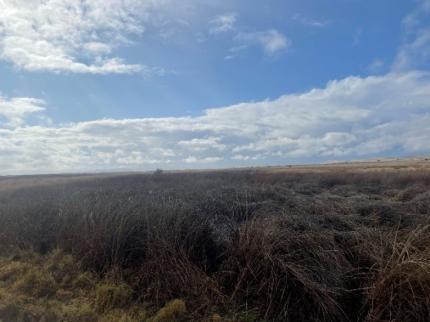

Habitat Project: Private Lands Biologist Hadley presented an outdoor workday partnering with Walla Walla Conservation District and Pheasants Forever. They came together to plant shrubs and seed a pollinator friendly grass seed mix on a landowner’s property outside of Dixie. The outdoor education program is from a grant that the Walla Walla Conservation District wrote that involves a service-learning program for K-12th grade focusing on restoration and salmonid habitat.
Providing Education and Outreach
Williams Lake Eagle Scout Project: Region 1 Access Manager Dziekan was contacted by Life Scout Colin Martinez. Colin is interested in an eagle scout project on our state lands. Martinez would like to install a life jacket loaner station at Williams Lake, a lake that he and his family frequent.
Dziekan met on site with Life Scout Martinez’s mother, laid out some plans, and started the process on his project. Dziekan shared some information on another life jacket loaner station that was installed as an eagle scout project at Liberty Lake.
Life Scout Martinez plans to spend the winter working on securing funds for the loaner station, building it, and then will install it next spring. If the weather holds out, he will install it this winter, but there is also no rush on his project as he still has several years left in scouting.
Conducting Business Operations and Policy
Region 1 Access Tour: Lowery, Gibbons, Robinette, and Dziekan toured Newman Lake, Liberty Lake, West Medical Lake, and Clear Lake to inspect the Gray fire damage and other management issues relating to the access sites.
At Clear Lake, Dziekan pointed out the surrounding ramps that were installed over 50 years ago and the issues with them. It was good to show Lowery and Gibbons the issues that access staff members are having to deal with every day. Just recently, Dziekan has had to clean up graffiti painted on the outside of the bathrooms at both Reardan Audubon and Newman Lake.
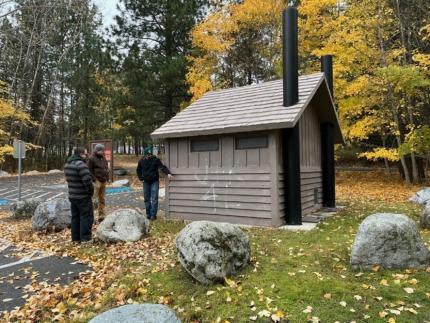
Reardan Audubon Wildlife Area Tour: This week’s tour also included the Reardan Wildlife Area. Lowery, Gibbons, Robinette, Dziekan, Wildlife Area Manager Finch, and Wildlife Area Assistant Manager Rimmelspacher went over the management and the type of work staff members do to maintain the unit. Wildlife area staff members will be calculating how much time is spent over the biennium maintaining the unit, which includes herbicide treatment, litter activities, and general parking lot maintenance.
Providing Recreation Opportunities
Waterfowl Hunting and Access Properties Sites: Biologist Cook started contract paperwork on two sites to provide field hunting opportunities for waterfowl and one that provides walk-in access to the west side of Winchester Lake to reduce walking distance for waterfowl and upland bird hunting.
Pheasant Release: Biologist Cook and Technician Blanchard helped with pheasant releases to supplement birds for hunters.
Hunter Communication: Biologist Cook responded to calls and emails from hunters looking for more information about the Washington Department of Fish and Wildlife hunter access program and looking for private lands to hunt.
Cougar Pelt Sealing: Private Lands Biologist Braaten sealed a cougar pelt for a hunter this week. Additionally, he collected DNA, a tooth, provided data to Cougar Mortality App, and mailed in the collection data.
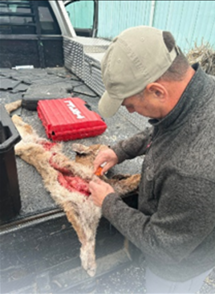
Providing Conflict Prevention and Education
Responding to Elk Damage to Haystacks: Specialist Heilhecker met with a landowner regarding elk damaging haystacks. The landowner provided photographs of last year’s damage. The landowner signed a damage prevention cooperative agreement after Specialist Heilhecker explained it. Heilhecker issued a kill permit to remove one antlerless elk to the landowner.
Necropsy Investigation: Specialist Heilhecker along with Washington Department of Fish and Wildlife Enforcement investigated two dead horses. The horses had been missing for four to five days, possibly a week. The horses were found together underneath a large tree. The carcasses had been scavenged yet most of their skeletons were intact with no broken bones. The rib bones had been chewed on the ends. Coyote scat was found at the scene. There was not enough evidence to determine cause of death. Given the condition of the skeletons and lack of evidence at the scene, the death of the two horses was not likely carnivores.
Responding to Cougar Report: Specialist Heilhecker received a cougar sighting report. The reporting party did not see the cougar but based on security camera footage, a cougar was on the property at 5:50 a.m. One of the neighbors has ten domestic cats that are allowed to roam. The reporting party believes the cougar may be interested in the cats. There is a garden and compost pile attracting a lot of mice that brings in the domestic cats. There are also a couple of neighbors with chickens. The reporting party notified neighbors about the cougar. Specialist Heilhecker advised that they secure all attractants, keep chickens locked up in their coop, keep dogs and cats inside.
Conserving Natural Landscapes
Science Division Assistance: Private Lands Biologist Braaten completed a fall lek survey for sharp-tailed grouse lek presence on the Big Bend Wildlife Area. They are hoping to for a possible trapping effort to collar a grouse and monitor them through winter months and beyond. The intention of the trapping and collaring effort is to identify additional winter habitat use. Private Lands Braaten found 25 grouse on the lek. Crews will be arriving this week to set up traps.

Providing Education and Outreach
High School Career Showcase: Biologist Cook attended a career showcase in Ritzville to answer questions and interest students in careers offered at the Washington Department of Fish and Wildlife. Biologists Cook and Morris attended another career showcase in Othello. Cook and Morris had mounts, skulls, and track molds for students to interact with.
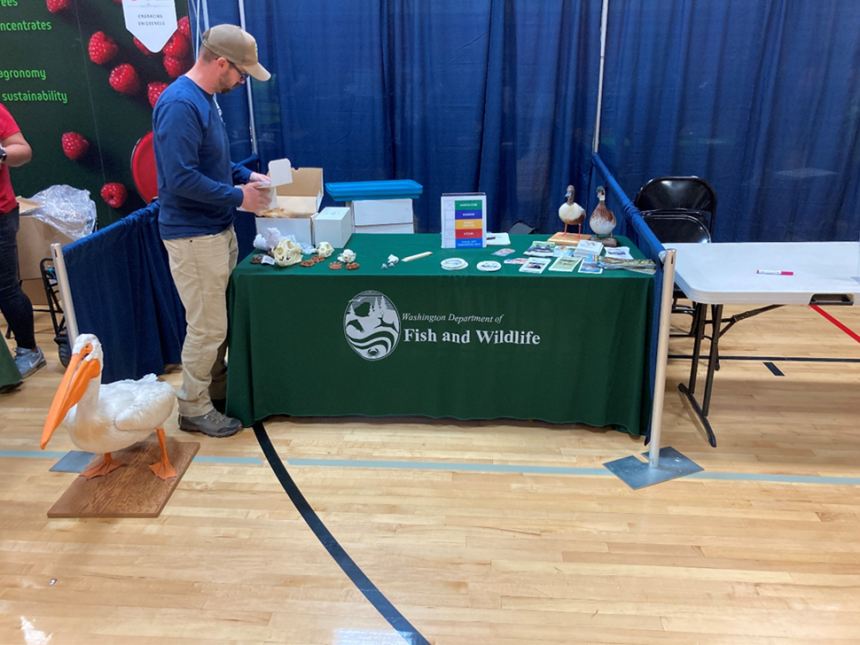
Kittitas Audubon Society: Biologist Soltysiak traveled to Ellensburg to present “The Pygmy Odyssey” to the Kittitas Audubon Society. The presentation explored the variety of creative techniques researchers and biologists have used to restore the Columbian Basin pygmy rabbit to Douglas and Grant counties. Students and professors from Central Washington University, Ellensburg community members, and members of the Audubon Society were in attendance.
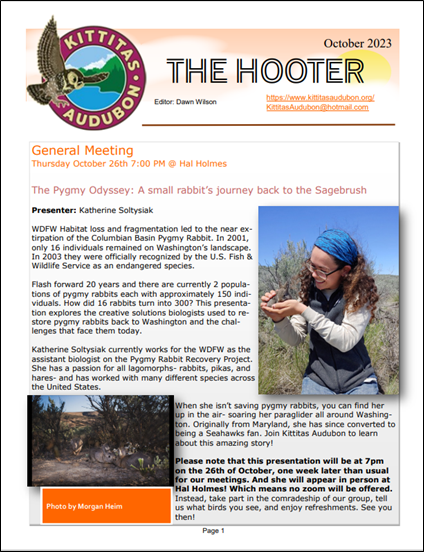
Conducting Business Operations and Policy
Database User Group Participation: Specialist Heilhecker attended a demonstration of the new database for issuing landowner damage and kill permits. The new database will replace the current system that can no longer receive security updates.
Wolf Advisory Meeting: Specialist Heilhecker participated in a wolf advisory group planning meeting.
The Nature Conservancy Land Parcels: Just outside Quincy, a few The Nature Conservancy (TNC) land parcels are up for sale. Before the sale can be completed, Biologists Gallie and Soltysiak surveyed the land to ensure the presence or absence of pygmy rabbits. After four days of survey efforts, the team found no evidence of pygmy rabbits- no burrows, no pellets, and no rabbit visuals.
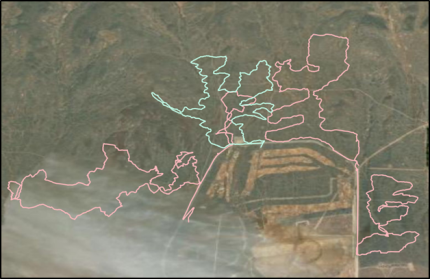
Managing Wildlife Populations
District 8 Bighorn Sheep Survey: District 8 Wildlife Biologist Wampole and Assistant Wildlife Biologist Moore conducted an aerial survey of the Yakima bighorn sheep population to monitor lamb recruitment following historic exposure to Mycoplasma ovipneumoniae (Movi). These surveys provide important data for the ongoing “Test and Remove” study.
District 4 Cougar Sealing: District 4 Wildlife Conflict Specialist Hand sealed three cougars for hunters who harvested them while deer hunting in eastern Washington.
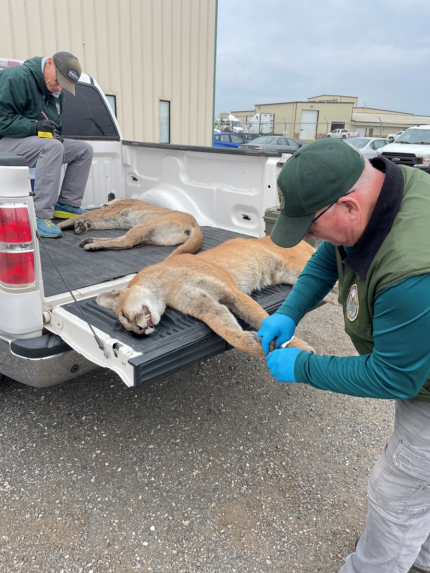
District 8 Cougar Sealing: District 8 Assistant Wildlife Biologist Moore sealed an adult female cougar harvested in eastern Washington earlier in October.
District 8 Deformed Elk Hooves: District 8 front-end staff members collected hooves from a hunter who noticed unusual features in the hooves of the elk they harvested. These hooves were processed and shipped to the Washington State University College of Veterinary Medicine for comprehensive testing to identify the cause of the abnormalities.
District 4 Deformed Deer Hooves: District 4 Wildlife Conflict Specialist Hand received a report from a hunter in GMU 372 who harvested a mule deer with deformed hooves. Digital images of the hooves were reviewed and confirmed as chronic laminitis (aka “founder”) by Washington State Department of Fish and Wildlife Veterinarian Mansfield. A sample, from a second deer with deformed hooves from GMU 382 (Region 5), was collected from the reporting hunter and was shipped to Washington Animal Disease Diagnostic Laboratory for further testing.
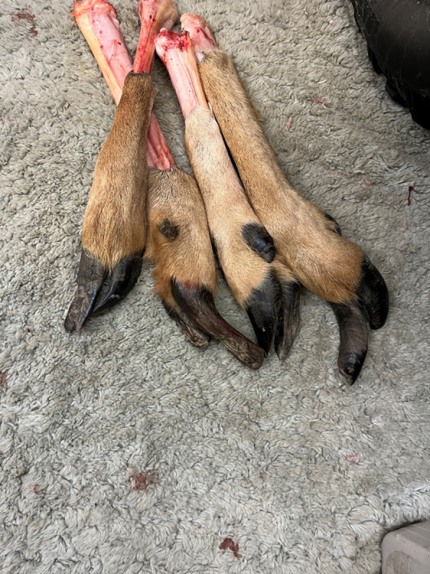
Bighorn Sheep Horn Marking: Biologists and other staff members across the region have been busy checking and marking many hunter-harvested bighorn sheep. Washington State Department of Fish and Wildlife (WDFW) regulations require a hunter who kills or possesses a bighorn sheep ram, harvested in Washington, to present the horns for inspection and marking within ten days. The horns can be taken to a Washington State Department of Fish and Wildlife regional or district office or a location designated by a department representative. Call a WDFW regional or district office to schedule an appointment with a biologist for horn marking. A WDFW employee will permanently mark an identification number on one of the horns. Inspection and marking do not substitute for Mandatory Hunter Reporting. For bighorn sheep, both are required. During checks, staff members also swab the nasal cavity to test and learn more about the dynamics of Mycoplasma ovipneumoniae (Movi) transmission.
North Cascade Fisher Monitoring: District 8 Assistant Wildlife Biologist Moore installed two fisher scent dispenser camera traps in remote locations in the North Cascade fisher restoration area. Many Department of Fish and Wildlife district biologists across the state and partners from the National Park Service, local tribal biologists, and volunteers are working together to install approximately 160 traps to determine the occupancy (presence or absence) of the species and to collect genetic samples using hair snares. The results of the genetic tests will inform biologists if enough fishers are reproducing to establish a self-sustaining population or if augmenting the populations with additional fishers is necessary to meet the goal of the project.
Providing Recreation Opportunities
Wenas Recreational Tour with Washington State Department of Fish and Wildlife Recreation Team: Wenas Wildlife Area Manager Hughes and Recreation Specialist Frame lead a tour of the Wenas Wildlife Area, showing all the reactional opportunities the wildlife area has to offer. The tour also showed some of the recreation areas and roads that need maintenance.
Wenas Road and Trail Mapping: Wenas Wildlife Area Manager Hughes is working with the GIS team to review road and trail data for the wildlife area. This information will be used as the wildlife area dives more into recreational planning. Hughes is reviewing all data with the GIS team in regard to trails, roads, gates, parking areas.
District 8 Pheasant Release: District 8 Wildlife Biologist Wampole, L. T. Murray Wildlife Area Manager Morrison, and Natural Resource Technician Blore released 144 pheasants at Green Gate.
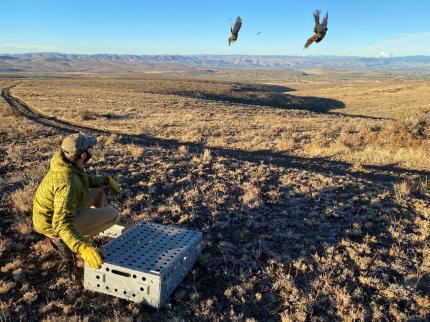
District 4 Pheasant Release: District 4 Wildlife Conflict Specialist Hand released pheasants at Hope Valley prior to the opening of the pheasant season.
Sunnyside/Snake River Pheasant Release: Sunnyside/Snake River Wildlife Area Manager Kaelber and Natural Resource Technician Manderbach released pheasants at Big Flat and Lost Island prior to the opening weekend of the pheasant season.
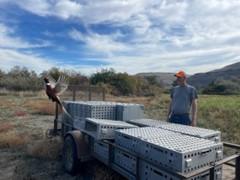
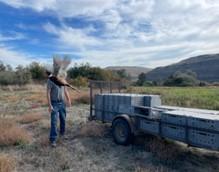
Providing Conflict Prevention and Education
Rattlesnake Hills Elk: District 4 Wildlife Conflict Specialist Hand monitored elk activity and assisted general season and damage permit holders with hunt coordination. Additional damage permits were issued and delivered to one landowner. Large numbers of elk were observed in winter wheat fields during early morning and just before dark. The beginning of the general season harvest appears to be one of the best in recent years, with several bulls and a few cows taken.
Connell Deer Damage: District 4 Wildlife Conflict Specialist Hand received and responded to a new deer damage complaint from a hay operation and cattle rancher in the Connell area. At times, over 70 deer have been observed browsing in the fields. Multiple non-lethal hazing strategies have been employed and further pressure from hunters during general and special permit seasons will be utilized. A damage prevention cooperative agreement was completed, and a couple of damage permits were issued to assist outside of established hunting seasons.
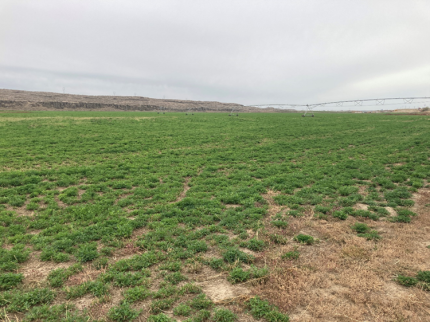
Plymouth and Paterson Area Deer Damage: District 4 Wildlife Conflict Specialist Hand coordinated with a large farm with row crops, orchards, and vineyards to address deer damage impacts by utilizing general season and special hunt permit hunting. All hunts were chaperoned by farm staff members who provided a great hunting experience for some first-time deer hunters.
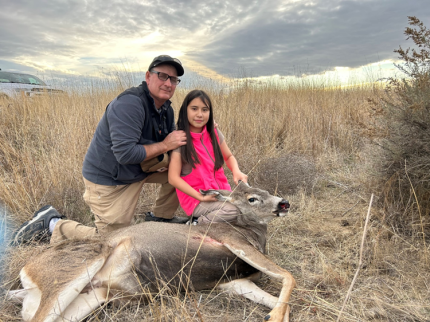
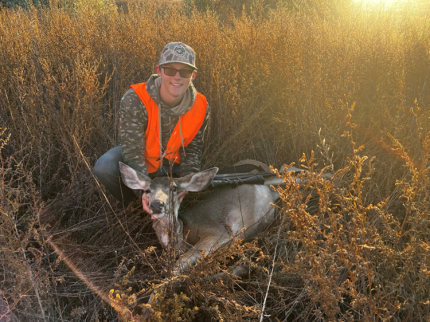
Kahlotus Deer Damage: District 4 Wildlife Conflict Specialist Hand delivered damage prevention permits for several landowners in the Kahlotus area. These permits and youth and Master Hunter deployments are used to haze deer out of winter wheat crops in GMU 381 along the Snake River.
Conserving Natural Landscapes
Colockum Post-Timber Harvest Road Abandonment: Logging contractors finished up their part of the Colockum Creek Timber Restoration Project by closing and abandoning spur roads opened up for this project. These were old, overgrown, existing roads that were opened to facilitate timber harvest and log hauling. At the end of the project, these roads are now being ditched, water-barred, and covered with logging slash to prevent erosion and illegal vehicle use.
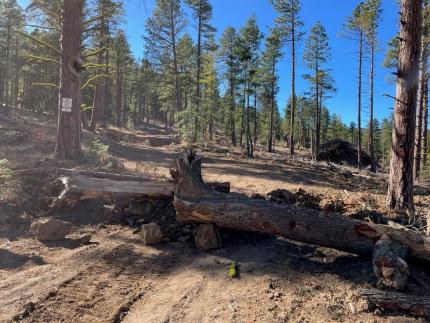
Colockum Post-Timber Harvest Grass Seeding: Colockum Wildlife Area Manager Lopushinsky and Assistant Manager Hagan got help from some local volunteers from the Rocky Mountain Elk Foundation in completing a seeding project on areas recently logged on the Colockum Wildlife Area. Volunteers helped open seed bags and filled the seeder with 400 pounds of seed for each load. It took 13 loads and 5,000 pounds of seed to complete the project, keeping the volunteers busy.
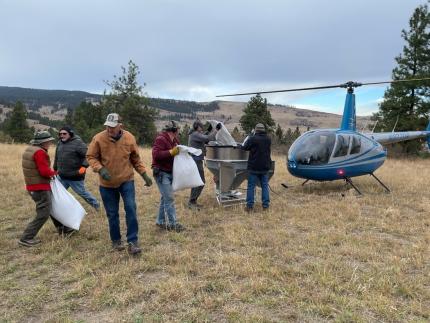
L. T. Murray Wildlife Area Restoration: The L. T. Murray crew planted sagebrush plugs in the uplands of the Whiskey Dick Unit where there was 100% shrub loss in the 2022 Vantage Highway fire. Assistant Manager Winegeart and Natural Resource Scientist Nass took another round of photos at Vantage Highway fire photo points. The photos to-date have good regeneration of native grasses and will eventually show post fire shrub growth.
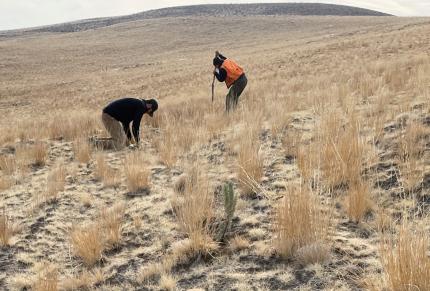
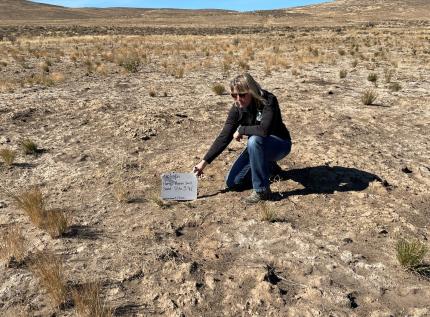
Sunnyside/Snake River Wetlands: Sunnyside/Snake River Wildlife Area staff members have prepped and reflooded all wetlands on both the west and east half of the wildlife area.
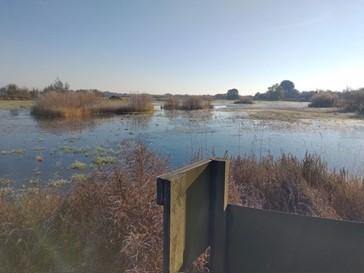
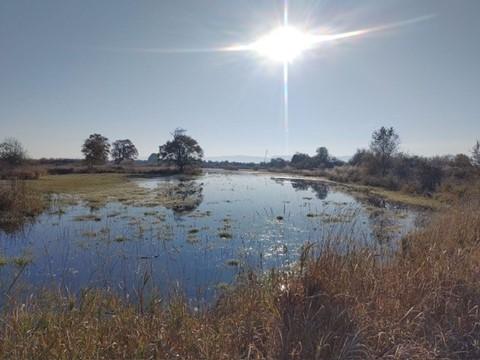
Cow Canyon Fire Planting: All Wenas Wildlife Area staff members participated in ongoing shrub plantings in the 2021 Cow Canyon fire scar. Native shrubs included Wyoming sage, wax currant, service berry, wood rose, bitterbrush, and blue elderberry.
Oak Creek Wildlife Area Prescribed Fire: Oak Creek Wildlife Area Assistant Manager Charlet visited the Cougar Canyon prescribed fire on Oct. 19 to ensure the residual fire was contained and did not cross any established handlines or roadways. The prescribed fire was completed on Oct. 9 and include a total of 160 acres, 55 on Department of Natural Resources (DNR) land and 105 on Washington Department of Fish and Wildlife (WDFW) land in Cougar Canyon. DNR fire crews and WDFW staff members continue to monitor the area to ensure the fire remains within control.
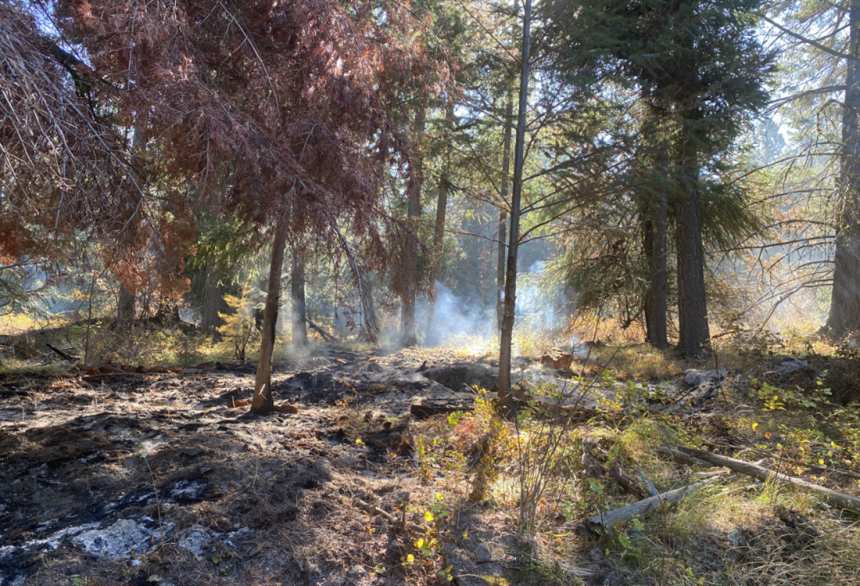
Providing Education and Outreach
Oak Creek Wildlife Area Visitor Center: The Oak Creek Wildlife Area Visitor Center is open during the modern firearm elk hunting season. The Friends of Oak Creek volunteer group staff the visitor center to answer questions from various hunters and wildlife area visitors.
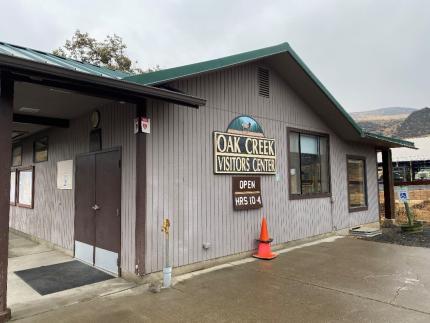
Other
L. T. Murray Wildlife Area Virtual Fence: L. T. Murray Wildlife Area Assistant Manager Winegeart, Wild Horse Coordinated Resource Management, Conservation Northwest, and ranchers in Douglas County attended a meeting to look at a virtual fence operation after a season of use. Collars are placed on cattle and provide auditory warnings when a cow approaches a programmed polygon boundary and a progression of shocks if the cow continues across the boundary. The system is being used on more than 100 ranches across the United States and shows promise for improving the L. T. Murray’s grazing management program.
L. T. Murray Wildlife Area Tour: L. T. Murray Wildlife Area Manager Morrison and Assistant Manager Winegeart gave Department of Fish and Wildlife planners a tour of the L. T. Murray Unit. The group looked at roads, trails, and camping sites in an effort to guide future management of these valuable resources.
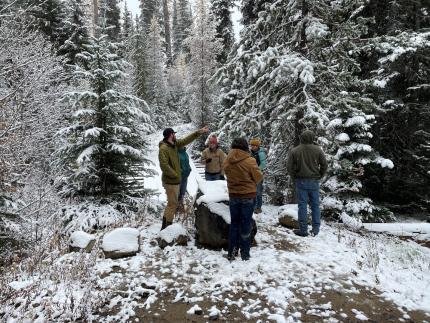
L. T. Murray Wildlife Area Felled Trees: L. T. Murray Wildlife Area Assistant Manager Winegeart visited Robinson Canyon with state foresters to identify and place a monetary value to 12 small to medium dead ponderosa pine trees that were illegally felled and removed. The trees would have had a small sell value but cutting of any standing trees in not allowed on the wildlife area.
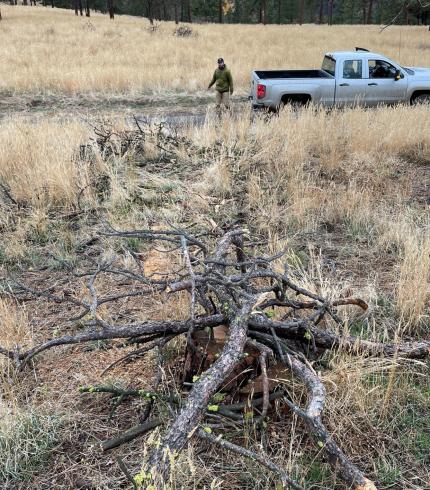
Oak Creek Wildlife Area Late Season Wildfire: Oak Creek Wildlife Area Manager Mackey observed and reported wildfire smoke in the Oak Creek Unit on Oct. 29. The fire started and remained on U. S. Forest Service ownership within the checkerboard ownership of the Oak Creek Unit. The fire grew to approximately five acres until being contained by U. S. Forest Service personnel. Ignition source was likely human caused.
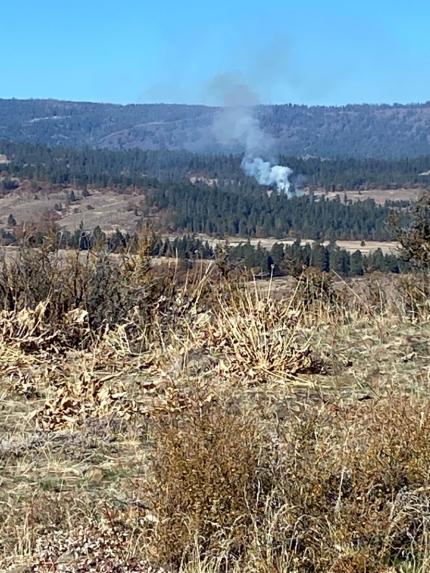
Managing Wildlife Populations
Fisher Camera Efforts: District staff members, conflict staff members, other internal staff members, collaborating partners, and tribes have all been involved with setting up various camera scent stations over the month of October. They hope to catch a glimpse of a state endangered fisher, a weasel that was extirpated (gone) from Washington until recent efforts to release individuals into the wilds of the state.
Providing Recreation Opportunities
Theler Wetlands Visit: Wildlife Area Manager Laushman met with staff members from the Hood Canal Salmon Enhancement Group at the Theler Wetlands to discuss upcoming trail and vegetation maintenance work that a Washington Conservation Crew (WCC) will do this winter.
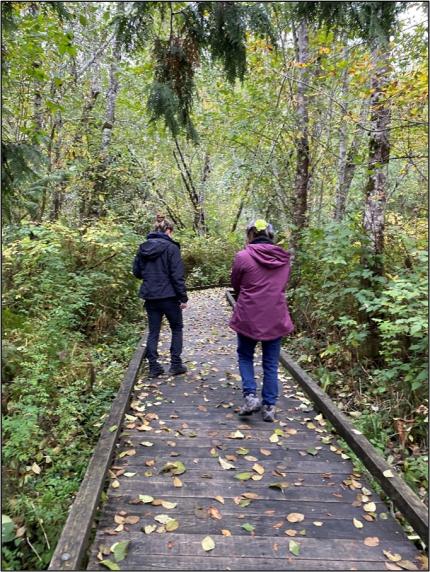
Fallen Tree: The access team received a report of a fallen tree at Hicks Lake blocking the access road. There were several vehicles stuck behind the log which spanned from the neighboring residential property, across the Department of Fish and Wildlife access road, and into Lacey City Parks property damaging several sections of two different fences that parallel the driveway. Access staff members were close and sprung into superhero-like action. These efforts included cutting the downed fir tree, opening the roadway by pulling the logs out of the way, and freeing the trapped site users.
The access crew managed to remove the remaining debris, clearing the area for future fence repairs. They accomplished this task in such a quick fashion that they still had enough time to place gravel on the boat ramp. It was already on the schedule to occur the following morning.
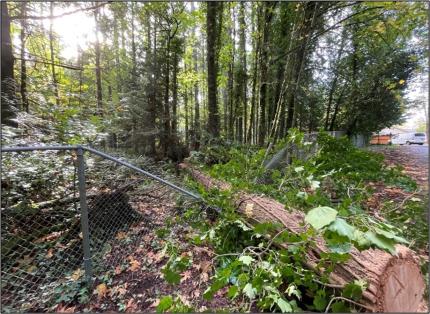
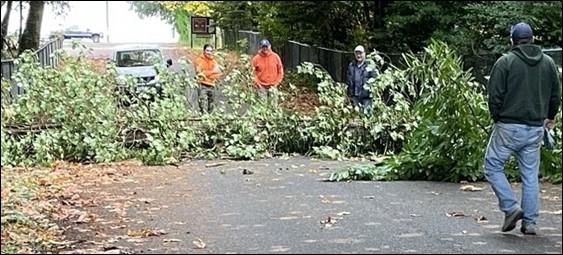
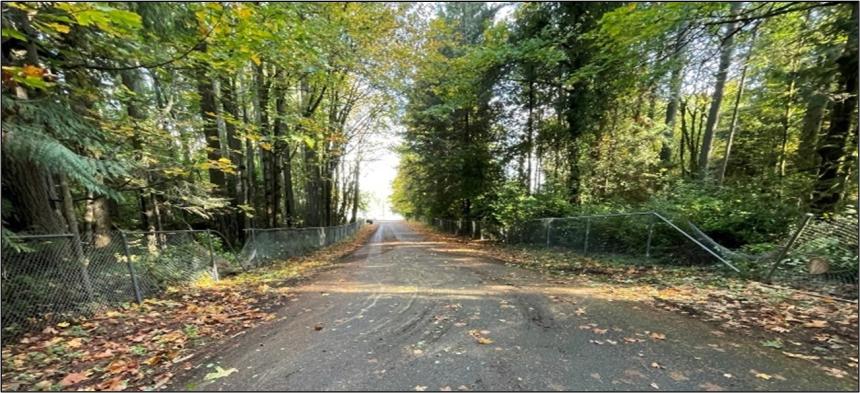
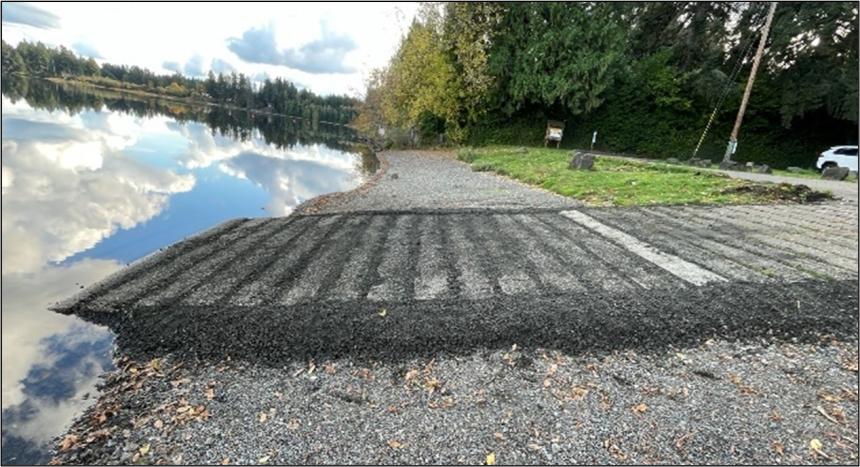
Gravel Maintenance at Multiple Access Areas: The access team spread gravel at several access areas throughout the region. The access team hauled over 60,000 pounds of gravel to ten access areas. They filled gaps between ramp planks, side armoring, and potholes. In addition to the ramp maintenance, the crew also cleared storm drains, and bio swale catch basins that were clogged and not performing well.
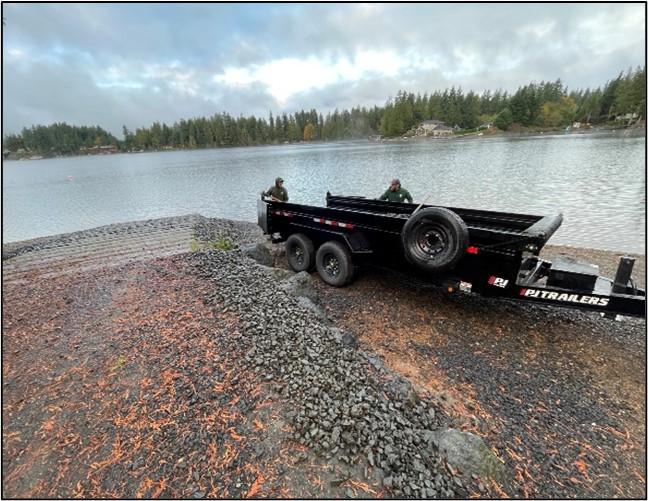
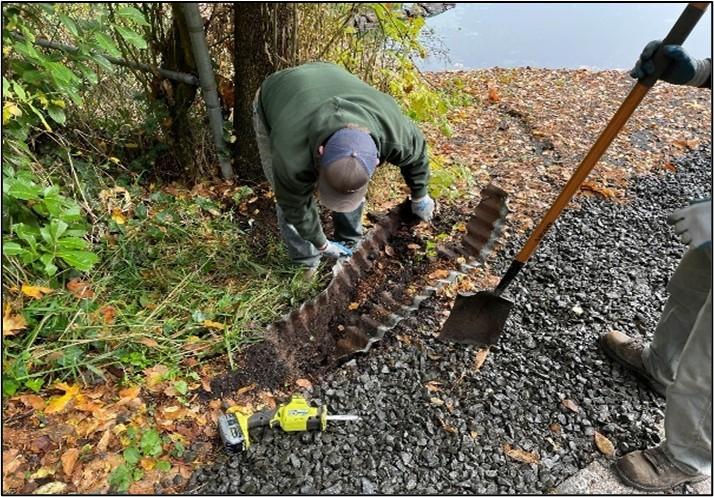
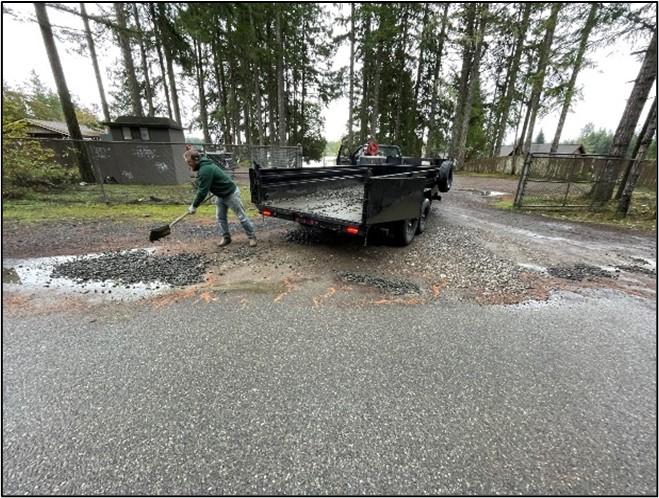
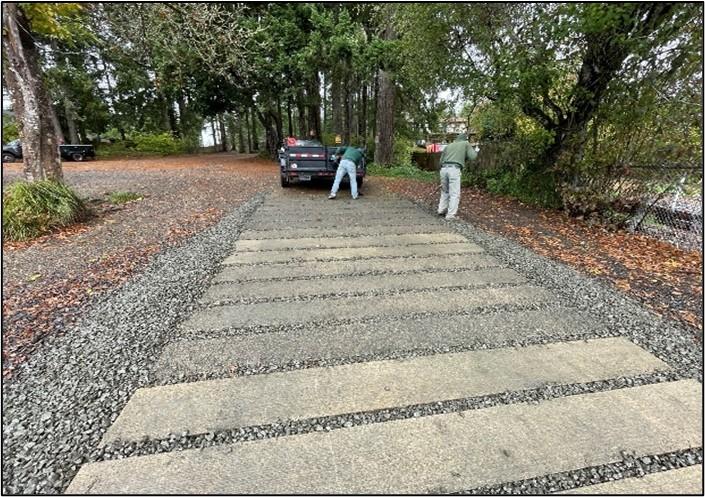
Ross Point: Access staff members addressed issues associated with unlawful camping in Kitsap County’s Ross Point Access Area. The crew removed several hundred pounds of debris from the beach and wooded areas. They posted additional agency signs and cleared vegetation to give enforcement officers a better line of sight to monitor the property.
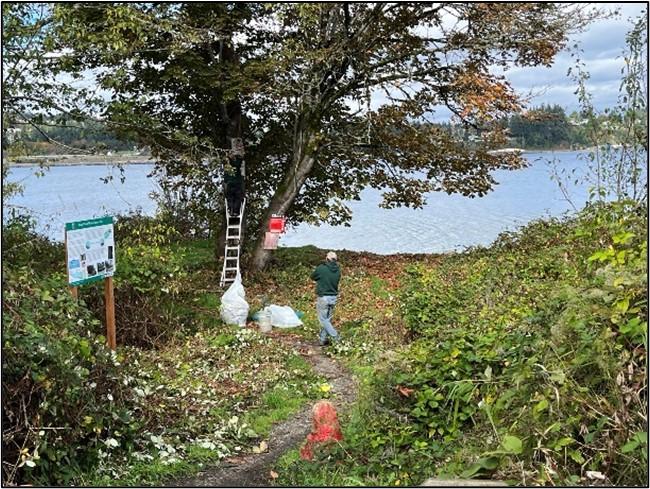
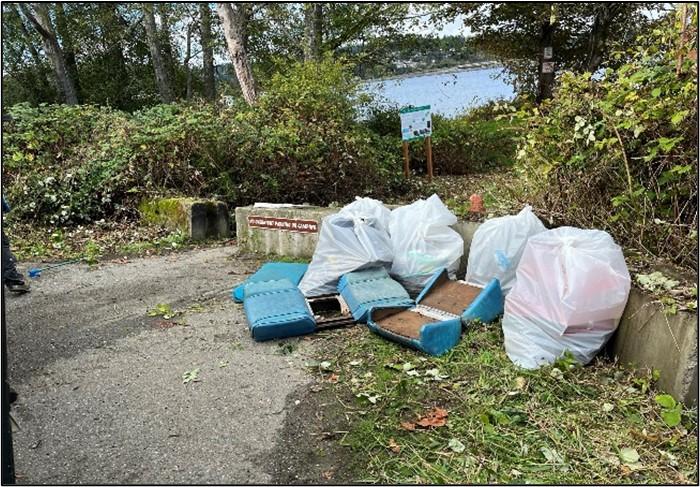
Other
Chainsaw Training: District Biologist McMillan, Assistant District Biologist Butler, Wildlife Area Technician Magliaro, and Wildlife Area Manager Laushman participated in a two-day chainsaw training course offered for Washington Department of Fish and Wildlife staff members to learn proper safety, maintenance, and usage techniques.
